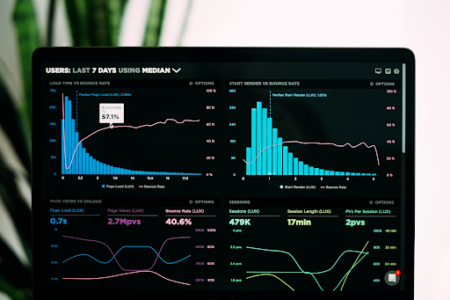6 January 2022
By Roger Kennedy
roger@TheCork.ie
Getting customers to turn up on your website and start spending their money is the cornerstone of modern business. Even if they don’t do it directly, they still need to interact with you online to understand who you are and why they should buy from you.
Gaining visibility, though, is surprisingly challenging. With more than a billion websites now on the internet, it’s hard for any single company to stand out. There’s just so much noise out there.
There’s some good news, though: with the right SEO techniques, you can climb up the ranking and gain strategic advantage for your brand. You don’t have to remain stuck on page three where nobody will ever find you.
What’s more, when you implement the right techniques, it’s not unusual to double the traffic you get. In fact, many firms see a ten- to one hundred-fold increase in visitors when they get their strategy right over time.
Before we plunge into explaining how to double your business’s website traffic, it’s worth going over some interesting statistics.
Google data shows that the top three search results get more than 60 percent of all traffic. What’s more, organic search has virtually the highest close rate of any channel at around 15 percent, way ahead of print advertising which is way down at around 1.7 percent.
What’s more, around three quarters of users never click past the first page of results. If they can’t find what they want, they usually just change their keyword. Hence, if your website is on page two, you’re missing out on virtually all the action.
Let’s take a look at some of the things that you can do to double your website’s traffic (or more). Check them out below.
Use Your Competitor’s Keywords
If you have a rival who seems to be doing well and selling a lot of products, check which keywords they’re targeting. Usually, any business with prominence online is matching their content and metadata to the exact phrases users are typing into search bars.
It’s not just small brands doing this. In fact, there are many large companies out there struggling to gain traction in global markets because they don’t understand local tastes and customs.
For instance, coffee giant Starbucks was able to transform its success in China by simply copying the keyword strategy of its closest rivals. It went from virtually nothing and a failure to now having hundreds of stores and hits online, all through simple keyword research.
Here’s the bottom line: don’t reinvent the wheel. Instead, copy until it offers no more advantages. Then strike out by yourself.
Link To Sites With High Domain Authority
In SEO, you want high domain authority sites to link to you. However, you don’t usually have much control over this. Most of the time, you have to get lucky or have a personal relationship with the site owner.
However, you can turn things around by linking your web pages to high DA pages across the web.
This approach works for several reasons. The first is that Google tends to trust sites that link to high DA domains more than those that don’t. It suggests that you’re making citations and providing users with genuine value. You’re not just a link farm.
It also helps in identifying what your site is about. It makes it easier for search engines to categorise what you do and how you can potentially serve users.
Creating links is dead easy too – and that’s always a bonus.
Publish All Your Most Valuable Content On Social Media
When your site is new, you’ll find it hard to rank on search engines for any keywords, even those that directly quote your business name. Because of this, it helps to also publish on social media.
Sites like Facebook and LinkedIn have extremely high domain authority. Because of this, you’re able to borrow some of their “juice” so to speak, when you link back to your site. If you have inbound links from these platforms, Google will sense that you’re more than just a site, and that you have a greater presence across the internet. This linking might not directly affect your ranking, but it will improve your overall DA which, in all likelihood, is extremely low right now.
When creating content for social media, consider the following variables:
- Length
- Readability
- Keywords
- Links
Try to tailor each to your audience and the requirements of the Google algorithm. Stay away from short, thin content. Create something that search engines will interpret as authoritative and helpful for users. Make sure that you include all of the keywords you’re using on your site in your social media posts to confirm the semantic connection. SEO experts generally recommend aiming for around 1,500 words per piece.
Use Infographics When Blogging Doesn’t Work
You don’t have to become a content mill, endlessly churning out blogs to improve your ranking. In fact, depending on your business and objectives, it might not be the most effective approach.
Another method is to use infographics. These visualise information to make it more digestible for your target audience.
There’s good evidence that they work too. That’s because around 50 percent of the brain is involved in visual processing. People tend to retain around 80 percent of what they see, but only 20 percent of what they read.
Using infographics could even bring down the price of SEO for your business. You may find that producing a smaller amount of higher-quality, more engaging content is better than a large quantity of low-quality blogs.
Focus On Mobile Conversions
Your desktop site is probably friendly and easy to use, but what about your mobile store? Can you say the same?
In most cases, you can’t. That’s because getting website functionality to work beautifully on a small handheld device is much more challenging.
It’s critical, though, that you get this right. If you don’t, you’ll lose your mobile customers and your competitors will get them instead.
You can actually check with Google whether your site is mobile-friendly by using the search engine’s mobile-friendliness tool. It’ll tell you directly whether your site works on mobile or if you need to make changes.
Turn All Your Pages Into Funnels
If you’ve been reading up on the latest in marketing recently, you’ll have come across the term “funnel.” It’s a metaphorical term describing how you’d like consumers to travel towards conversion. And it requires a totally different approach to your landing pages.
Funnels are tools that help you direct users to the products and services that they need. Instead of presenting them with a menu of options, you ask questions, get answers and then shuttle them digitally to the pages that are most relevant. You can create funnels on landing pages, product pages, and even homepages. It’s all about stepping into the user’s shoes and guiding them on a personalised journey to conversion.
Creating funnels is great for SEO. It increases dwell time on your site and it enhances engagement. Customers who have great experiences are much more likely to leave comments or reviews which are both signals that Google includes in its ranking approach.
Find Out What People Really Want
Lastly, when it comes to SEO, it pays to find out what people really want to know about. The more data you can collect, the more likely you are to get attention.
Try to see yourself as a big data company. Look for what interests users and then create detailed posts and content about it. You’ll find that traffic will increase, a signal to Google that it should boost your page’s rankings. Once you get the ball rolling, there’s often no stopping it.




